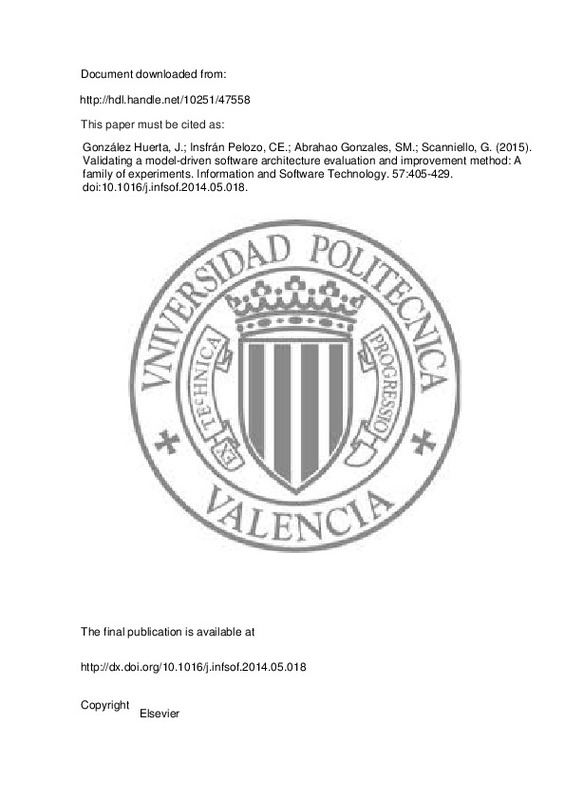JavaScript is disabled for your browser. Some features of this site may not work without it.
Buscar en RiuNet
Listar
Mi cuenta
Estadísticas
Ayuda RiuNet
Admin. UPV
Validating a model-driven software architecture evaluation and improvement method: A family of experiments
Mostrar el registro completo del ítem
González Huerta, J.; Insfrán Pelozo, CE.; Abrahao Gonzales, SM.; Scanniello, G. (2015). Validating a model-driven software architecture evaluation and improvement method: A family of experiments. Information and Software Technology. 57:405-429. https://doi.org/10.1016/j.infsof.2014.05.018
Por favor, use este identificador para citar o enlazar este ítem: http://hdl.handle.net/10251/47558
Ficheros en el ítem
Metadatos del ítem
| Título: | Validating a model-driven software architecture evaluation and improvement method: A family of experiments | |
| Autor: | González Huerta, Javier Scanniello, Giuseppe | |
| Entidad UPV: |
|
|
| Fecha difusión: |
|
|
| Resumen: |
Context: Software architectures should be evaluated during the early stages of software development in
order to verify whether the non-functional requirements (NFRs) of the product can be fulfilled. This
activity is even ...[+]
|
|
| Palabras clave: |
|
|
| Derechos de uso: | Reserva de todos los derechos | |
| Fuente: |
|
|
| DOI: |
|
|
| Editorial: |
|
|
| Versión del editor: | http://dx.doi.org/10.1016/j.infsof.2014.05.018 | |
| Código del Proyecto: |
|
|
| Agradecimientos: |
The authors would like to thank all the participants in the experiments for their selfless involvement in this research. This research is supported by the MULTIPLE Project (MICINN TIN2009-13838) and the ValI+D Program ...[+]
|
|
| Tipo: |
|







![[Cerrado]](/themes/UPV/images/candado.png)


